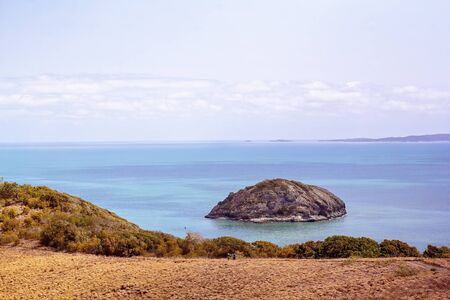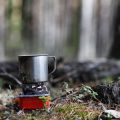Introduction to Cornish Coastal Camping
If you’re yearning for a taste of true British adventure, wild camping along Cornwall’s rugged coastline offers an unmatched blend of raw natural beauty and living heritage. With cliffs battered by Atlantic winds, secluded coves whispering tales of smugglers, and the ever-present scent of salt and gorse, Cornwall provides a backdrop where each sunrise promises fresh discovery. Here, camping isn’t just about pitching a tent – it’s about immersing yourself in a way of life shaped by centuries of seafaring, fishing, and farming. British campers know there are strict regulations: wild camping is technically not permitted without landowner consent, but Cornwall’s tradition of hospitality often opens doors for respectful travellers. The region’s unique customs – from morning sea swims to evening gatherings around driftwood fires – foster a rare camaraderie among those who embrace the elements. In this setting, Cornish coastal camping cuisine becomes more than sustenance; it’s a celebration of local produce, seasoned with sea air and stories shared under wide-open skies.
Foraging and Sourcing Local Produce
Cornwall’s rugged coastline and lush countryside offer a bounty of wild edibles for those willing to look. Foraging is not just about free food—it’s a time-honoured way to connect with the land, respect local ecosystems, and enrich your coastal camping cuisine. Here’s how you can responsibly gather ingredients from Cornwall’s hedgerows, fields, and tidal zones, alongside tips on sourcing the freshest produce and seafood directly from the locals.
Responsible Foraging in Cornwall
Before setting out, remember that responsible foraging is essential to preserve Cornwall’s delicate habitats. Stick to these hard-and-fast rules:
- Know Your Plant Life: Only pick what you can positively identify—mistakes can be dangerous.
- Harvest Sustainably: Take only what you need; never strip an area bare. Leave enough for wildlife and plant regeneration.
- Check Local Byelaws: Some areas are protected or privately owned—always seek permission where necessary.
- Tide Times Matter: When gathering seaweed or shellfish, consult tide charts and follow all safety protocols.
Cornish Wild Edibles: A Quick Guide
| Edible | Habitat | Season | Notes |
|---|---|---|---|
| Wild Garlic | Woodland edges, damp fields | March–May | Pungent leaves, use sparingly in stews or salads |
| Samphire | Muddy estuaries, salt marshes | June–August | Crunchy & salty, perfect with fresh fish |
| Sloes | Hedgerows | Autumn | Add to gin or stews for tart flavour |
| Laver Seaweed | Tidal rocks | All year (best after frosts) | Mainstay of Cornish laverbread; cook thoroughly |
| Mussels & Cockles | Sandy/muddy beaches at low tide | September–April (check regulations) | Soak & purge before cooking; always check water quality advisories |
Sourcing from Cornish Markets and Fishermen
If foraging isn’t feasible, Cornwall’s local markets and coastal communities are treasure troves for fresh produce and seafood. Here’s how to make the most of them:
Navigating Local Markets & Fishmongers
- Penzance Farmers’ Market: Fridays bring a wide range of locally grown veg, cheeses, and artisan breads.
- Looe Harbour Fish Market: Arrive early for the catch of the day—ask for line-caught mackerel or sustainable crab.
- Cornish Farm Shops: Many sell “pick your own” fruit and veg throughout summer.
- Befriend a Fisherman: Coastal villages like Mevagissey and St Ives often have fishermen selling direct from their boats. Polite conversation goes a long way—ask about today’s haul and recommended recipes.
Tips for Connecting Locally
- Avoid supermarkets when possible—freshness suffers and so does the local economy.
- Bring cash; many small traders don’t accept cards.
- If unsure about prepping seafood or wild plants, ask the seller—they’re usually happy to share hard-won local knowledge.
This hands-on approach to sourcing ensures your campfire meals are truly Cornish—from sea to skillet—and deepens your connection to this windswept peninsula.

3. Essential Camping Cookware and Setup
When it comes to Cornish coastal camping, your cookware needs to be as tough and reliable as the Atlantic weather. Don’t bother with flashy gadgets or overstuffed kitchen kits; true British hardiness means keeping it lean and functional. A trusty billy can—preferably stainless steel or enamel—is your best mate for boiling water, brewing tea, and whipping up a stew with whatever fresh local produce you’ve bartered from the harbour. Pair this with a lightweight, windproof stove: nothing fancy, just solid performance in the bluster that rolls off the sea. Invest in a sturdy frying pan with a folding handle—perfect for searing mackerel straight from the line or crisping up some Cornish new potatoes. A sharp penknife is indispensable; you’ll need it for gutting fish, slicing bread from the village bakery, or prepping wild greens plucked from the dunes. Don’t skimp on a reliable fire steel or waterproof matches either—damp coastal air can turn ordinary lighters useless. Finally, bring a collapsible washing-up bowl and eco-friendly soap; respect for these rugged shores means leaving no trace behind. With this minimalist yet durable kit, you’re set to tackle any seaside meal, come rain, wind or bracing Cornish fog.
4. Signature Cornish Campfire Recipes
Embracing the raw elements of Cornwall’s coast, campfire cooking takes on a new level when you harness the region’s bounty. Below, you’ll find step-by-step recipes that marry traditional Cornish ingredients with time-honoured British outdoor cooking techniques—ideal for windswept clifftop camps or tucked-away coves.
Mackerel Fillets with Wild Samphire & Lemon Butter
Ingredients:
| Ingredient | Amount |
|---|---|
| Fresh Cornish mackerel fillets | 2-4 (depending on size) |
| Wild samphire (washed) | 1 good handful |
| Lemon | 1 (zest & juice) |
| Cornish butter | 30g |
| Sea salt & cracked black pepper | To taste |
Method:
- Light your campfire and set a cast iron skillet or heavy frying pan over the flames.
- Add butter to the pan; once melted and foaming, lay in the mackerel fillets skin-side down.
- Sear for 2-3 minutes until crisp, then flip. Add samphire, lemon zest, and a squeeze of juice.
- Sauté for another minute; season generously. Serve immediately with charred sourdough or roasted potatoes.
Cornish New Potatoes in Foil Parcels
Ingredients:
| Ingredient | Amount |
|---|---|
| Cornish new potatoes (halved if large) | 500g |
| Cornish sea salt flakes | 1 tsp |
| Fresh thyme or rosemary sprigs | A few sprigs |
| Cornish butter or rapeseed oil | 2 tbsp |
| Cracked black pepper | To taste |
Method:
- Tear off double-thick sheets of foil. Pile potatoes in the centre, dot with butter or drizzle oil, scatter herbs and season well.
- Tightly seal parcels and nestle them into the embers of your fire.
- Cook for 20-25 minutes, turning halfway through. Unwrap carefully—watch for escaping steam—and enjoy straight from the foil as a rustic side.
Pilchard Toasties – A Coastal Classic Reinvented
Ingredients:
| Ingredient | Amount |
|---|---|
| Canned Cornish pilchards in tomato sauce | 1 tin (approx 155g) |
| Sliced crusty bread or traditional saffron loaf | 2 thick slices per person |
| Mature Cornish cheddar cheese (grated) | A generous handful per toastie |
| Dijon mustard (optional) | A smear per slice (to taste) |
| Cornish butter (for frying) | A knob per toastie |
Method:
- If using, spread a thin layer of mustard on each bread slice. Top one slice with drained pilchards and a heap of cheddar.
- Sandwich together. Heat butter in a pan over the campfire; fry toastie on both sides until golden brown and cheese is melting.
- Serve hot—a proper Cornish pick-me-up after a bracing coastal hike.
Tough Tips for Campfire Cooking on the Cornish Coast:
- Shield your fire from wind using rocks or driftwood screens; Cornish weather is famously unpredictable.
- Purge samphire of excess salt by soaking briefly in fresh water if picked wild.
- Pilchards and mackerel are best cooked fresh but can be kept cool in an insulated bag packed with frozen local milk or ice blocks overnight.
- If you’re foraging, know your plants: only harvest samphire from clean tidal areas and never take more than you need.
- A portable cast iron skillet is worth its weight—robust enough for high heat and direct flame cooking on any Cornish beach or cliff edge.
This mix of resourcefulness and rugged local flavour defines true Cornish coastal camping cuisine—bold, simple, and rooted in the land and sea around you.
5. Weathering the Elements
If you’ve chosen to embark on a Cornish coastal camping adventure, you’re already braced for the county’s famously unpredictable weather. From sudden Atlantic squalls to bracing sea breezes and damp mists rolling in off the cliffs, Cornwall can throw everything at you in a single afternoon. But as any seasoned wild camper knows, adapting to these elements is half the fun—and key to enjoying your campfire cuisine by the waves.
Building a Smart Windshelter
First things first: shelter is survival. When setting up your cooking spot, always scout for natural windbreaks—tuck yourself behind gorse bushes or low stone walls if you can. If nature offers no cover, rig up a makeshift windshelter using tarps and sturdy driftwood stakes. Angle your shelter so it blocks the prevailing westerlies, but allow enough ventilation so smoke doesn’t billow back into your face or tent. A low-profile set-up helps keep you hidden from both gusts and curious passers-by.
Waterproofing Like a Local
Cornwall’s rain is notorious for arriving sideways, so waterproofing your kit is non-negotiable. Use heavy-duty bin bags or dry sacks to protect ingredients and matches. Double-bagging perishables keeps local produce fresh even if clouds burst overhead. Wear waxed jackets and rugged boots—Cornish classics that shrug off drizzle—and don’t skimp on keeping firewood dry. Stash kindling under an upturned bucket or beneath your tarp; even the hardiest local oak won’t burn if it’s sodden through.
Maintaining Your Fire in Sea Breezes
A good cooking fire on the Cornish coast takes more than luck; it requires cunning and patience. Dig a shallow pit to shield flames from crosswinds or use rocks collected from above the high-tide line as a barrier (never strip the beach itself). Build your fire low and dense—log cabins or Dakota fire holes work well here. Start with local tinder like dry bracken or sheep’s wool snagged on fences, then feed it slowly with driftwood or seasoned branches from inland hedgerows. Shield your flame with your body when lighting up, and keep backup firelighters handy just in case Atlantic weather gets feisty.
Final Survivalist Wisdom
Weathering Cornwall’s elements isn’t just about endurance—it’s about thriving with what nature gives you. With a sharp eye for shelter, proper waterproofing, and steady hands tending a wind-whipped fire, you’ll not only keep hunger at bay but enjoy some of the finest campfire meals this rugged coastline can offer.
6. Sustainable Practice and ‘Leave No Trace’
Upholding British Countryside Ethics
When indulging in Cornish coastal camping cuisine, it’s not just about the flavours or the scenery—it’s about respecting the land and sea that provide them. The British countryside is cherished for its rugged beauty and delicate ecosystems, so it’s essential to uphold a strict code of conduct when camping and cooking along Cornwall’s shores.
Responsible Waste Disposal
Always pack out what you pack in. Use reusable containers and bags to minimise single-use plastics, and dispose of waste at proper facilities away from the coast. Never leave food scraps behind, as these can harm local wildlife or attract pests. Composting biodegradable waste is ideal, but only where permitted by local guidelines.
Respecting Local Wildlife
Cornwall’s coastline teems with life—from nesting seabirds to curious seals. Avoid disturbing animal habitats: cook at least 50 metres away from sensitive areas such as dunes, rock pools, or nesting sites. Use designated footpaths to avoid trampling fragile vegetation, and observe wildlife from a respectful distance without feeding or handling them.
Minimising Your Coastal Footprint
Choose established campsites or wild camp only where it’s legal and sustainable. Use portable stoves rather than open fires to prevent damage to grasslands or pebbled beaches. Stick to established fire pits if available, and ensure all embers are completely extinguished before leaving your site. Finally, plan your meals with locally sourced produce to support Cornish farmers while reducing food miles and packaging waste.
The Cornish Way Forward
Sustainable coastal cooking isn’t just a trend—it’s a vital practice for preserving Cornwall’s natural treasures for future generations. By embracing ‘Leave No Trace’ principles, you’ll enjoy Britain’s wild edges in true hard-nosed style: resourceful, respectful, and always ready for the next adventure on the Cornish coast.


